Upon its unveiling in 2018, Ford announced the Co-Pilot360 as "the most advanced suite of standard driver-assist technologies among full-line brands," designed to improve driver confidence in congested roads around the world. "Though our vehicles today are safer than ever, drivers tell us they are still stressed about getting in a potential accident," said Jim Farley, Ford president of Global Markets. "That's one reason why we're making these must-have technologies accessible to millions of customers each year."
Back then, the CoPilot360 was the only driver-assist system that offered the sort of driver-aid features only available on luxury cars as standard equipment across regular Ford models, including cars, SUVs, and the F-150 pickup truck. The system was first introduced in the 2019 Ford Edge midsize SUV as a pioneering suite of advanced driving assistance systems (ADAS), with standard features encompassing forward collision warning with pedestrian detection, automatic forward emergency braking, blind-spot warning, rear cross-traffic warning, lane-departure warning, lane-keeping assistance, automatic high-beam headlights, and a reverse camera.
Following its successful integration into the Edge, Ford extended the Co-Pilot 360 to various other models in its lineup. Presently, a wide array of Ford vehicles proudly offer Co-Pilot 360 as either standard or optional equipment for enhanced driver safety and convenience.
Related Reading: Your Comprehensive Step-By-Step Guide To Volvo Pilot Assist
Ford Co-Pilot360 vs. Co-Pilot360 Assist+ vs. Active Park Assist 2.0
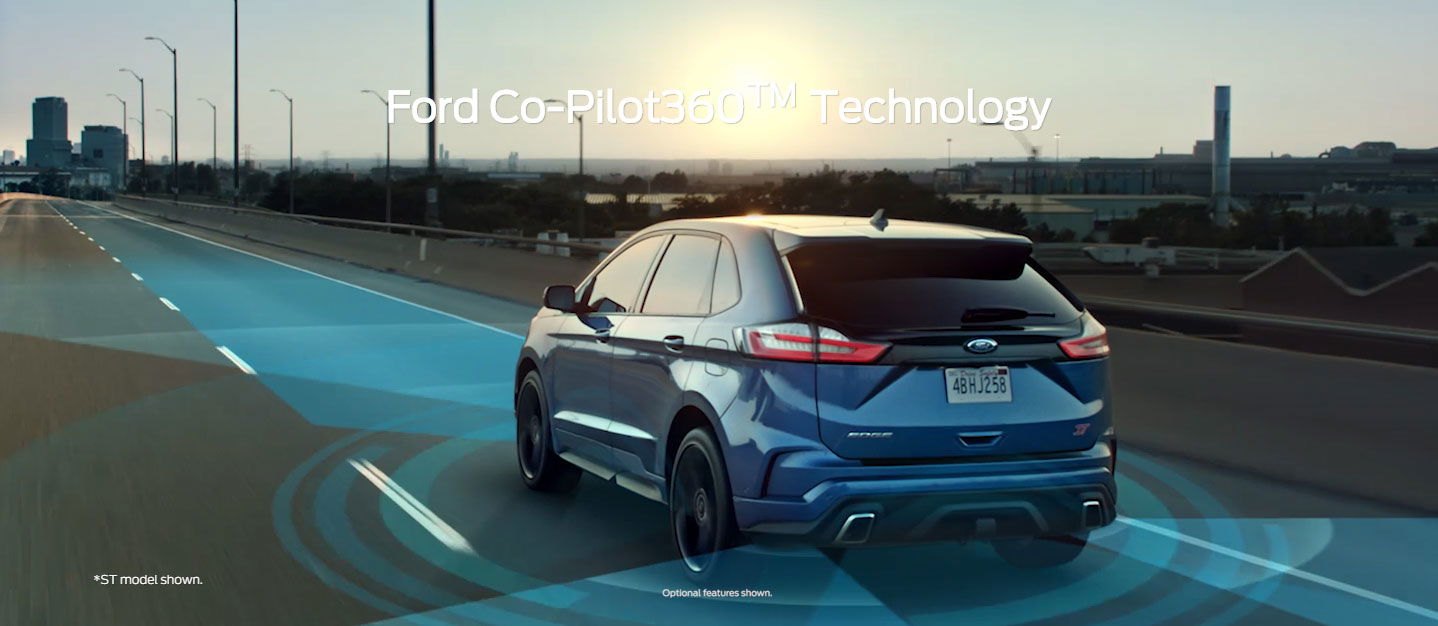
Since technological innovation waits for no one, Ford wasted no time in improving the Co-Pilot system, exemplified by the marque’s introduction of the Ford Co-Pilot 360 Assist+ to select models, including the redesigned 2020 Ford Explorer.
Going beyond the basic set of features, Ford Co-Pilot 360 Assist+ brings an array of intelligent capabilities, including upgrades such as the "intelligent" adaptive cruise control with stop-and-go functionality, lane-centering assistance, speed-limit sign recognition, and evasive steering assistance.
These elements collectively lay the foundation for Level 2 semi-autonomous driving assistance systems. The enhanced adaptive cruise control deserves special attention, as it now boasts an intelligent feature. It can automatically resume travel for up to 30 seconds after the vehicle comes to a stop, a significant improvement from Ford's previous system, which had a three-second limit.
Additionally, the introduction of evasive steering assistance provides an extra layer of vehicle stability when a driver takes abrupt actions to maneuver around obstacles in their path.
Furthermore, Ford introduced an automatic reverse braking feature to complement the optional Active Park Assist 2.0 technology in certain vehicles. When this functionality is engaged, it takes charge of identifying suitably sized parallel and perpendicular parking spaces.
Once a suitable parking spot is identified, and if the driver opts for the next level of parking assistance while remaining inside the vehicle, Active Park Assist 2.0 assumes control over the steering, brakes, transmission, and accelerator, guiding the car through the parking process autonomously.
Ford envisions a future where this technology evolves to offer autonomous parking capabilities even when the driver is not seated inside the vehicle. This aligns with advancements seen in other innovative technologies like Remote Smart Parking Assist for Genesis and Hyundai models, as well as Tesla Smart Summon, all of which are designed to provide enhanced convenience and ease in parking situations.
Standard Features Of The Ford Co-Pilot360 Driver-Assist System

Ford Co-Pilot360 starts with standard automatic emergency braking, known as "pre-collision assist with pedestrian detection," which helps prevent collisions with other vehicles or pedestrians. If a potential collision is detected, the system issues warnings and, if necessary, applies the brakes to reduce the risk of a frontal collision.
This emergency braking feature is currently standard safety equipment on 91% of Ford vehicles in North America. Additionally, Ford offers the Blind Spot Information System (BLIS), which uses radar to detect vehicles in the blind spot and alerts the driver with a side-view mirror indicator light. Cross-traffic alert helps drivers when reversing from parking spots or driveways.
The Lane Keeping System offers three functions: first, it notifies drivers using steering wheel vibration if the vehicle drifts near lane markings. Second, it provides steering assistance to recenter the vehicle in the lane.
Third, a driver alert system continuously monitors driver behavior and provides warnings if the system detects reduced vigilance. Commercial customers also benefit from Ford's expansion of driver-assist technologies, with vehicles like the E-Series, F-650, F-750, and the F59 now offering features like automatic emergency braking, lane departure warning, and driver alert systems.
Co-Pilot360 vs. Co-Pilot360 2.0
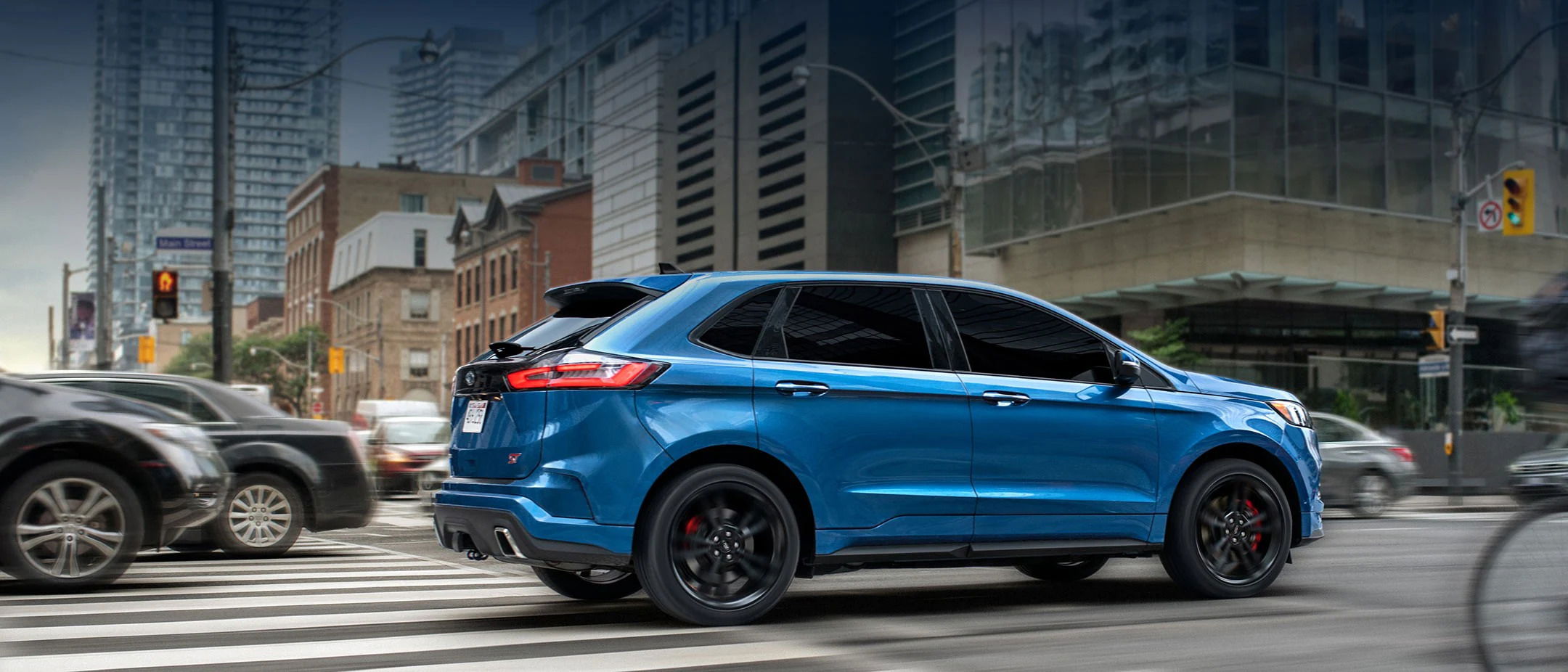
The Mustang Mach-E electric SUV debuted Ford’s updated Co-Pilot 360 2.0, representing the next evolution of the Blue Oval’s driver assistance technology. This advanced version showcased three innovative features: Road Edge Detection, Blind Spot Assist, and Intersection Assist. Road Edge Detection caters to narrow roads, typically rural roads without lane markings.
It detects the edge of the road, whether it's lined with dirt or grass, and alerts the driver when the vehicle approaches this boundary. The goal is the same: preventing unintentional departures from the road. Blind Spot Assist enhances the traditional blind-spot warning system by introducing an active intervention component.
When a vehicle moves in Ford's blind spot, and the driver disregards the warnings, Blind Spot Assist takes corrective action, steering the vehicle back towards the center of its lane to avert hazardous lane changes. Intersection Assist is another notable addition to the upgrade.
This technology can proactively halt the vehicle when a driver attempts an unsafe left turn across oncoming traffic. For instance, if you're at a traffic light, it turns yellow, and you initiate your turn, but oncoming vehicles are trying to pass through the intersection before the light turns red, Intersection Assist intervenes by stopping your Ford until the potential danger has cleared.
Related Reading: Everything You Need To Know About Kia DriveWise
Ford Models With Co-Pilot360

Ford Co-Pilot360 is standard or optional on the EcoSport, Escape, Bronco, Bronco Sport, Explorer, Mustang Mach-E, Expedition, Mustang, Transit Connect, Transit, E-Transit, Transit CC-CA, F-150 Super Duty, F-150 Lightning, Edge, Maverick, and Ranger.
The standard and optional copilot360 features depend on the vehicle model. Back in 2021, the Co-Pilot360 active safety system was rolled out on just four of the Blue Oval’s core models, including the Mach-E, Expedition, F-150, and Edge. Today, every Ford vehicle has at least some Co-Pilot360 functionality.
Ford Co-pilot360 vs. Ford BlueCruise
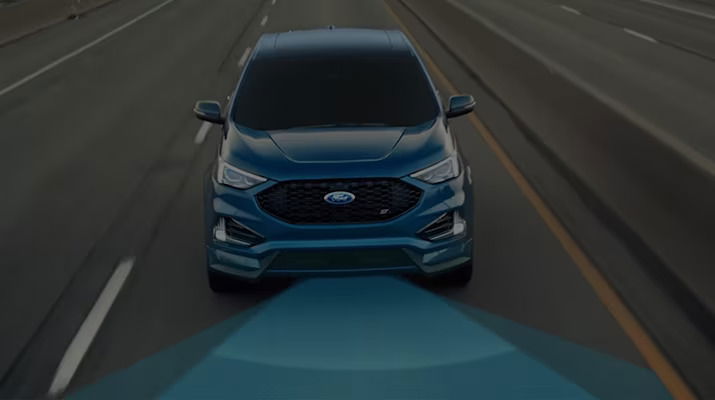
Ford BlueCruise and Ford Co-Pilot360 are two distinct sets of features and technologies offered by Ford, each designed to enhance the driving experience, safety, and convenience, but they serve different purposes.
BlueCruise is Ford's advanced driver-assist system that offers hands-free driving on certain pre-mapped and divided highways in the United States and Canada. It includes Adaptive Cruise Control with Lane Centering, which helps maintain the vehicle's position within the lane while adjusting speed based on traffic.
Ford’s BlueCruise enables hands-free driving using a combination of GPS data, high-definition maps, camera-based sensors, and radar. It also employs a driver-facing camera to monitor driver attentiveness and ensure they remain engaged and ready to take control when necessary.
The Co-Pilot360, on the other hand, is a suite of advanced driver assistance systems (ADAS) designed to improve safety and convenience during everyday driving. It typically includes features like automatic emergency braking, blind-spot monitoring, lane-keeping assistance, adaptive cruise control, and more. These features help prevent accidents and enhance driver confidence.
Summarily, Ford BlueCruise is a more advanced system designed for hands-free highway driving, while Ford Co-Pilot360 is a comprehensive suite of ADAS features aimed at enhancing safety and convenience during regular driving on a wide range of roads. BlueCruise is a subset of the Co-Pilot360 system, focused on delivering a more autonomous driving experience in specific highway conditions.
How Much Does The Ford Co-pilot360 Cost?
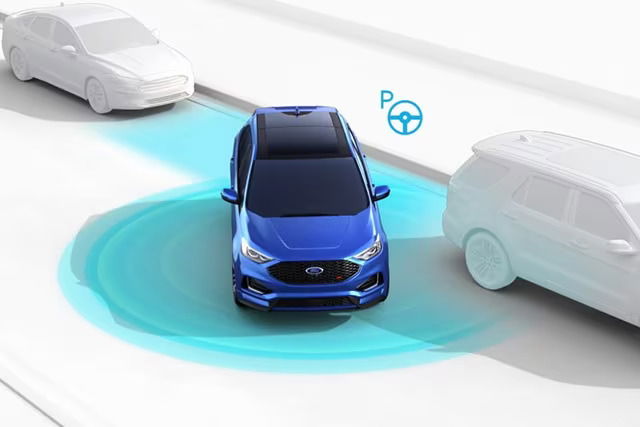
The cost of the Ford Co-Pilot360 varies depending on the specific Ford vehicle and trim level you choose. Ford offers Co-Pilot360 as both standard and optional equipment on many of its models. In some cases, it may be included as standard on certain trim levels, while in others, it could be available as part of an optional package or as a standalone option.
The cost can range from no additional charge for models where it's standard equipment to several thousand dollars for more advanced versions of the system, especially if it includes additional features beyond the basic Co-Pilot360 suite.
To determine the exact cost for a particular Ford vehicle and trim level, it's advisable to visit the official Ford website, contact a Ford dealership, or consult the pricing and options available for the specific model you're interested in. Keep in mind that prices may vary depending on your location and any ongoing promotions or incentives offered by Ford.
Can the Ford Co-Pilot360 be Upgraded?
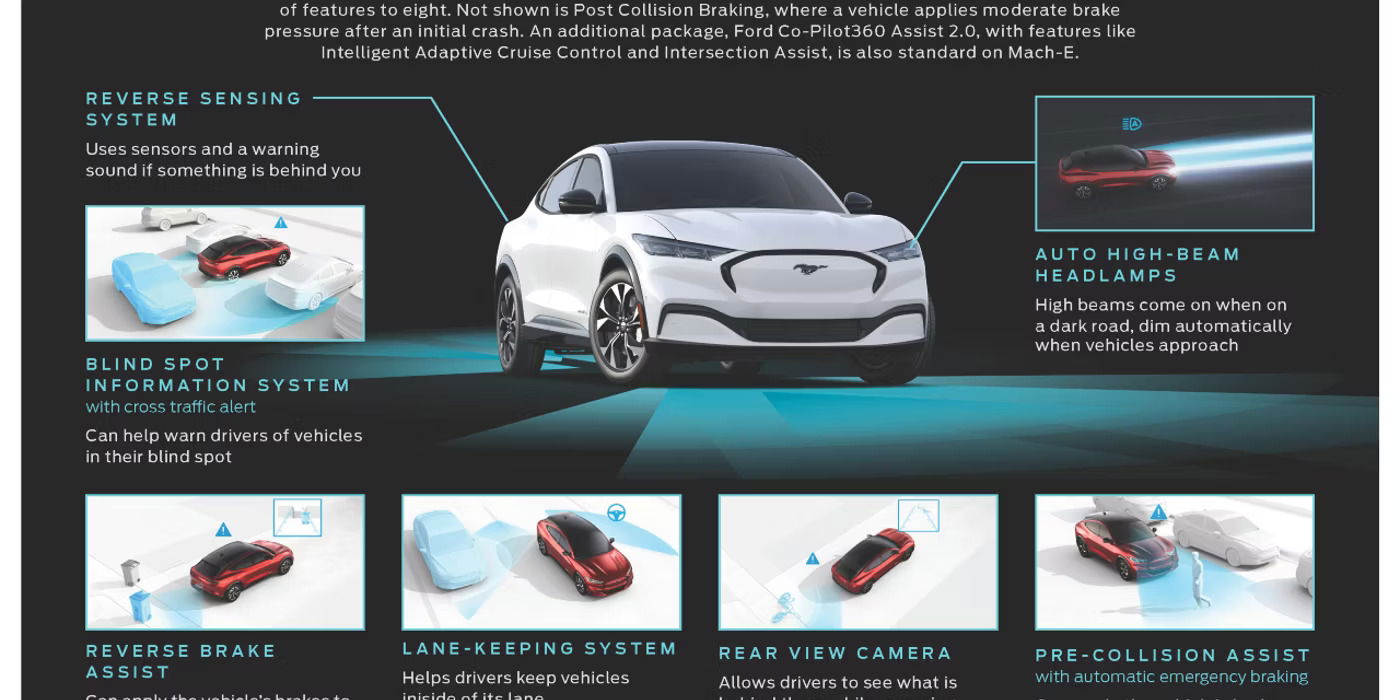
The ability to upgrade Ford Co-Pilot360 depends on the specific vehicle, trim level, and model year. While some features within the Co-Pilot360 suite may be available as optional upgrades or part of different packages when you purchase a new Ford vehicle, the extent of these upgrades can vary.
It's important to note that certain Co-Pilot360 features may be hardware-dependent, and in such cases, a retrofit upgrade might not be feasible. However, Ford occasionally releases software updates to enhance the performance and capabilities of their advanced driver assistance systems.
If you're interested in upgrading or adding specific Co-Pilot360 features to your existing Ford vehicle, we recommend contacting your local Ford dealership or consulting your owner's manual for information on available upgrades and compatibility with your vehicle model and year.
Your dealership should be able to provide guidance on the available options and any applicable software updates to enhance your Co-Pilot360 system.
How To Turn Ford Co-Pilot360 On And Off
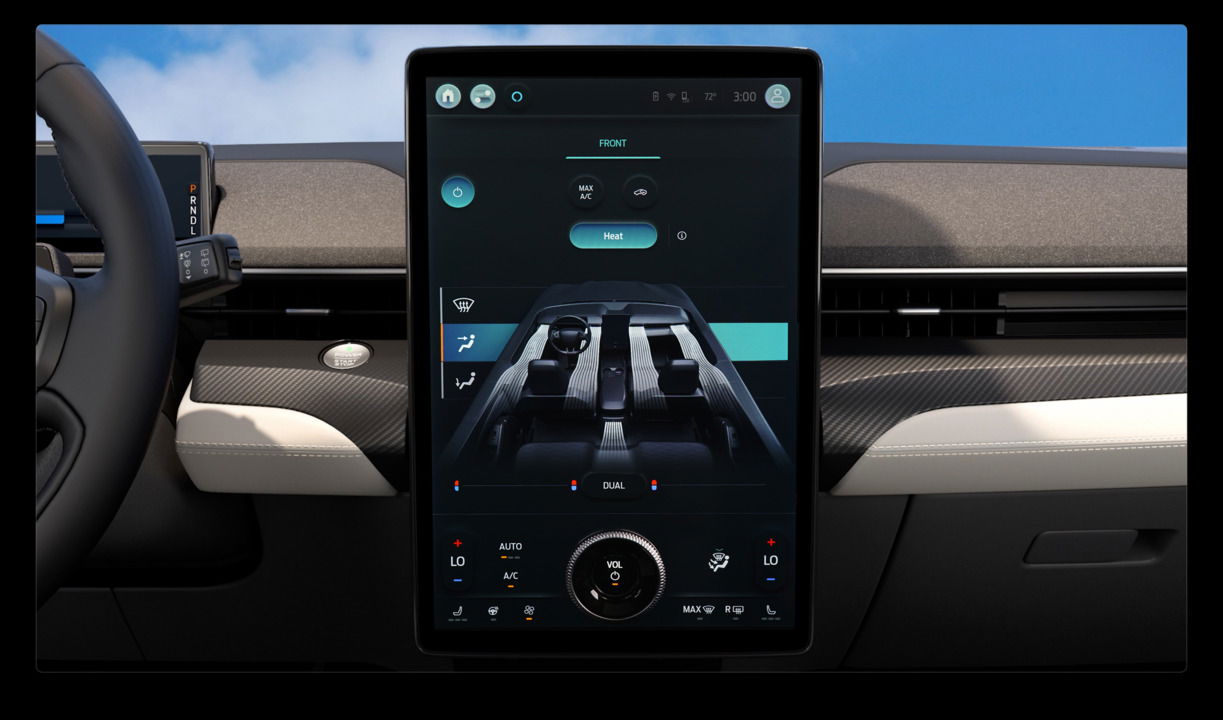
The process for turning the Ford Co-Pilot360 on and off can vary depending on the specific vehicle and its features. Generally, here's how you can manage the system:
To Turn On Ford Co-Pilot360:
1. Start the Vehicle: Ensure your Ford vehicle is running, whether by starting the engine or, in some cases, turning the ignition to the "on" position without starting the engine.
2. Access Vehicle Settings: Most Ford vehicles with advanced driver assistance systems like Co-Pilot360 allow you to access and configure settings through the infotainment system's touchscreen, which may include a "Settings" or "Driver Assistance" menu.
3. Enable Features: Navigate through the menu to find the Co-Pilot360 or related safety and driver assistance settings. From there, you can enable or customize the specific features you want to use.
To Turn Off Ford Co-Pilot360:
1. Access Vehicle Settings: Follow the same steps as when turning it on to access the vehicle settings through the infotainment system.
2. Disable Features: In the menu, you can disable or customize the Co-Pilot360 features. You may find options to turn off adaptive cruise control, lane-keeping assistance, or other components of the system.
3. Confirm Selection: Follow any prompts or confirmations to save your changes and deactivate the specific Co-Pilot360 features you no longer wish to use. It's important to consult your owner's manual and refer to the specific instructions for your Ford model, as the interface and options may vary from vehicle to vehicle.
Lastly, be aware that some Co-Pilot360 features may automatically deactivate when you turn off the vehicle, while others may need manual intervention to disable or modify their settings.